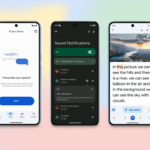During one of our weekly Zoom calls, I enthusiastically shared with my family about the thrilling mystery letters I’ve been receiving. It turns out that my mother had signed me up for Dear Holmes, a subscription service that sends weekly mystery letters through the mail, unraveling a new case bit by bit each month.
This is just one example of the various ways in which stories and puzzle-solving experiences are being delivered through mail subscriptions. I later learned that a colleague had tried out a case from the Instagram-popular Hunt A Killer service. This piqued my interest, leading me to explore the cryptic world of puzzles through postal subscriptions.
For this guide, I researched companies offering similar games, with a focus on boxes including physical props and objects alongside written clues and stories. I delved into player reviews, explored company websites, and watched YouTube videos of players solving past cases to understand each service’s offerings.
I discovered that the immersive games fall into two types of experiences: narrative mysteries centered on deduction and exploration of fictional environments, and puzzle-filled boxes providing an escape-room-style experience at home.
Once familiar with the available experiences, I ordered and played seven options that, based on my research, seemed to epitomize what these boxes offer. Whether it’s the open-world sensation from the Mysterious Package Company’s boxes, or the clue-filled experiences taking you across different countries like Finders Seekers offers, these boxes showcase what to expect when these enigmatic boxes arrive at your doorstep.
During my research, I consulted with Mairi Nolan, an escape-room reviewer, and narrative mystery experience designer, and Dave Neale, the writer of the most recent edition of the tabletop deduction game Sherlock Holmes Consulting Detective: The Baker Street Irregulars. Both helped me understand the process involved in creating these narrative puzzles and what sets good puzzles apart from bad ones.
Primarily, the puzzles inside these boxes are intended to challenge and engage the player’s curiosity or observational skills, which all these puzzles accomplish to varying extents. However, the best boxes yield that satisfying feeling of cracking a riddle that only the player could have solved. “Anything that excites you or gives you an ‘aha’ moment is really good,” as Nolan pointed out. “At the end of the day, these have to give you joy.” Creating that feeling of epiphany, typically found at the end of mystery novels, after the mystery has been solved, is where our favorite boxes excel.
A note on difficulty: Puzzle difficulty is relative and may vary significantly between players and even among boxes from the same service. The assessments below reflect my experience as a puzzle and mystery enthusiast who had previously tried a few similar boxes before working on this guide. Your experience may differ.








